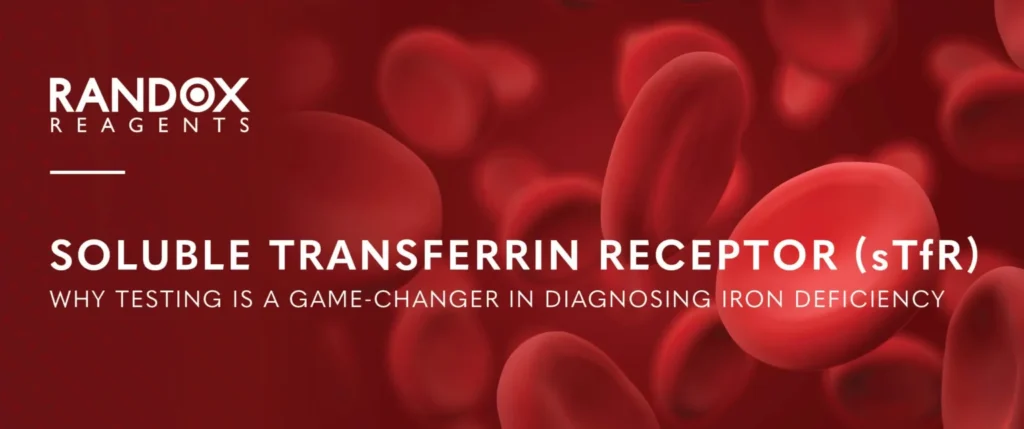Why Soluble Transferrin Receptor (sTfR) Testing Is a Game-Changer in Diagnosing Iron Deficiency

Iron deficiency is one of the most common nutritional problems worldwide, often leading to iron deficiency anaemia (IDA). But diagnosing it is not always straightforward—especially when patients have chronic diseases or inflammation that can cloud traditional iron tests. That is where soluble transferrin receptor (sTfR) testing comes in, offering labs and clinicians a powerful tool for clearer diagnosis.
What Exactly Is Soluble Transferrin Receptor?
Think of the transferrin receptor as a “doorway” on the surface of cells that lets iron in. The soluble transferrin receptor, or sTfR, is a piece of that doorway that gets cut off and floats freely in the bloodstream. The cool thing? The amount of sTfR in the blood reflects how many transferrin receptors are on the cells themselves—so it gives us a window into the body’s iron needs.
Why Is sTfR So Important in Clinical Practice?
When someone is iron deficient, their cells crave more iron, and so the number of transferrin receptors—and thus sTfR—increases. This makes sTfR a great marker for iron deficiency. But what really sets it apart is that sTfR levels don’t go up just because of inflammation or chronic disease, which is a big limitation of many other iron tests.
This means sTfR can help differentiate between:
- Iron Deficiency Anaemia (IDA) — where sTfR levels are elevated.
- Anaemia of Chronic Disease (ACD) — where sTfR levels usually stay normal, even if iron metabolism is disturbed.
This distinction is crucial because it affects treatment decisions.
Who Benefits Most From sTfR Testing?
sTfR levels are particularly useful in diagnosing iron deficiency in tricky cases, including:
- Patients with chronic illnesses like cystic fibrosis or cancer
- People with autoimmune conditions such as type 1 diabetes.
- Pregnant women experiencing functional iron deficiency.
- Individuals with haemolytic anaemia or sickle cell anaemia
Key Benefits of the Randox sTfR assay
- A correlation coefficient of r=0.977 was displayed when the Randox methodology was compared against other commercially available methods.
- Latex Enhanced Immunoturbidimetric method facilitating testing on biochemistry analysers and eliminating the need for dedicated equipment.
- Excellent measuring range – he healthy range for sTfR is 0.65 – 1.88mg/L. The Randox sTfR assay can comfortably detect levels outside of the healthy range, measuring between 0.5 – 11.77 mg/L.
- The Randox sTfR assay is available in a liquid ready-to-use format for convenience and ease-of-use and stable to expiry when stored at +2 to +8°C.
- Applications are available detailing instrument-specific settings for the convenient use of the Randox soluble transferrin receptor assay on a wide range of clinical chemistry analysers.
Don’t Forget the Full Picture: Iron Panel Testing
Iron status isn’t just about sTfR. For a complete understanding, labs often use a panel of tests including:
- Serum Iron: How much iron is actually circulating.
- Total Iron-Binding Capacity (TIBC): How much transferrin is available to carry iron.
- Transferrin Saturation: The ratio of serum iron to TIBC.
- Ferritin: The body’s iron storage marker—although this can be tricky if inflammation is present.
Together, these tests provide a comprehensive picture of a patient’s iron health.
Bottom Line
If your lab or clinic deals with anaemia cases—especially those complicated by chronic disease or inflammation—adding sTfR testing could be a real game-changer. It helps cut through the noise and delivers clear, actionable insights into iron status.
Interested in learning more about Randox’s sTfR assay and how it can fit into your workflow? Get in touch with us for detailed information and instrument-specific application notes.